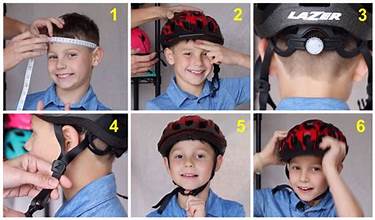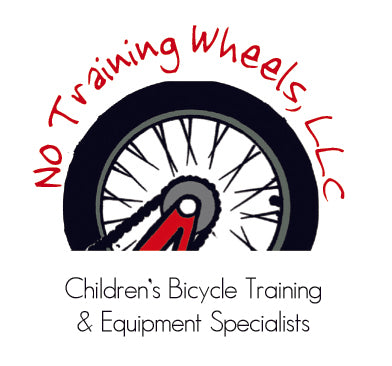
Bicycle Helmet Safety Guide: Essential Fitting Tips and Size Chart
Share
A properly fitted bicycle helmet reduces head injury risk by up to 85% and brain injury by up to 88%. This comprehensive guide will help you select and fit the right helmet for maximum protection.
Getting the Right Size
Step 1: Measure Head Circumference
- Use a flexible measuring tape or string with ruler
- Position tape 1 inch (2.5 cm) above eyebrows and ears
- Take multiple measurements for accuracy
Quick Size Reference
| Age Group | Head Circumference | Helmet Size |
|---|---|---|
| Toddler (2-4) | 18-20.5" (46-52cm) | XS/S |
| Child (5-8) | 19.7-22" (50-56cm) | S/M |
| Youth (9-13) | 21.3-22.8" (54-58cm) | M/L |
| Adult | 21.3-24.4" (54-62cm) | S/M/L |
Note: Individual manufacturers may have slight variations in sizing
Achieving Perfect Fit
Position and Adjustment
- Place helmet level on head
- Leave two finger-widths above eyebrows
- Form "V" straps under ears
- Allow one finger space under chin strap
Using Adjustment Systems
- Dial-Fit System: Adjust for precise fit
- Padding System: Use thicker pads for narrow heads, thinner for wider
Essential Safety Checks
Perform these tests after fitting:
- Eyes: See helmet rim when looking up
- Ears: Straps form "V" under earlobes
- Mouth: Feel helmet pull down when opened
- Shake: Helmet stays in place during movement
Critical Safety Points
- Replace after any crash
- Never buy to "grow into"
- Check fit before every ride
- Replace every 3-5 years
- Verify CPSC certification
Why Proper Fit Matters
Protection Benefits
- Reduces head injury risk by 48%
- Decreases serious head injury by 60%
- Lowers fatal injury risk by 34%
- Distributes impact forces evenly
Additional Advantages
- Increases wearing consistency
- Improves comfort during rides
- Provides environmental protection
- Sets positive example for others
Regular Maintenance
Check these elements monthly:
- Strap condition
- Shell integrity
- Fit adjustment
- Pad positioning
Remember: When in doubt about fit, consult a professional at your local bike shop.
Want more cycling safety tips? Subscribe to our newsletter for weekly updates.
Why Helmets Matter
Bicycle helmets reduce head injury risk by 85% when worn properly. Your child should wear a helmet during every ride, no matter how short. Make this a non-negotiable rule from the start.
Finding the Right Size
Measurement Steps
- Wrap a soft measuring tape around your child's head
- Position tape just above eyebrows
- Keep tape level all around
- Measure widest part of head
- Match measurement to helmet sizes:
- Extra Small: 18"-19.75" (46-50cm)
- Small: 20"-21.25" (51-54cm)
- Medium: 21.75"-23.25" (55-59cm)
- Large: 23.5"-24.5" (60-62cm)
Proper Positioning
The helmet should sit:
- Level on head
- One to two finger-widths above eyebrows
- Not tilted forward or backward
- Snug but not uncomfortably tight
Strap Adjustment Guide
The "V" Formation
- Adjust side straps to form a "V" under each ear
- Front strap should be vertical
- Back strap should be nearly vertical
Chin Strap
- Should be snug but allow mouth to open
- Test: One finger should fit between strap and chin
- Buckle should be centered under chin
Quick Fit Test
Perform these checks:
- Eyes: Helmet rim should be 1-2 fingers above eyebrows
- Ears: Straps should form a "V" under earlobes
- Mouth: Strap should be snug when mouth is closed
- Rock Test: Helmet shouldn't rock when head is shaken
When to Replace
Impact Replacement
- Replace after ANY crash
- Even if no visible damage exists
- Don't take chances with safety
Age Guidelines
- Replace every 3-5 years
- Replace if straps become frayed
- Replace if shell shows cracks/damage
Common Fitting Mistakes
Avoid these errors:
- Helmet tilted back exposing forehead
- Loose straps
- Incorrect size selection
- Worn or damaged helmet use
[NEEDED: Add section on helmet certification standards and labels to check for]
Remember: A properly fitted helmet is your child's most important piece of safety equipment. Take time to get it right.
Deep Discussion on the Importance of Proper Helmet Fit
Maximizing Protection
A properly fitted helmet ensures that it covers all the vital areas of the head, including the forehead, temples, and back of the skull. When a helmet fits correctly, it can reduce the risk of head injury by up to 85% and the risk of brain injury by up to 88%.
Preventing Shifting During Impact
A loose helmet may shift during a fall, exposing parts of the head to direct impact. Conversely, a helmet that's too tight can be uncomfortable and may not be worn consistently.
Enhancing Comfort and Usability
A well-fitted helmet is more comfortable, encouraging regular use. Cyclists who experience discomfort due to poor fit may be tempted to wear the helmet incorrectly or not at all.
Improving Force Distribution
Proper fit allows the helmet to distribute impact forces evenly across its surface, maximizing its protective capabilities.
General Importance of Wearing a Helmet
Reducing Head and Brain Injuries
Helmets significantly decrease the risk of severe head and brain injuries. Studies show that helmet use can reduce head injury risk by 48%, serious head injury by 60%, and traumatic brain injury by 53%.
Protecting Against Fatal Injuries
Wearing a helmet can reduce the risk of fatal injuries by up to 34%. This is particularly important given that head injuries are a leading cause of bicycle-related fatalities.
Safeguarding Against Various Accident Types
Helmets are effective in protecting cyclists in crashes involving motor vehicles as well as in accidents from falls and other causes.
Setting a Good Example
By wearing a helmet, cyclists set a positive example for others, especially children, encouraging a culture of safety in cycling.
Legal and Insurance Considerations
In many regions, wearing a helmet is a legal requirement. Failure to wear one can result in fines and may impact insurance claims in the event of an accident.
Protection from Environmental Factors
Beyond crash protection, helmets also shield cyclists from sun exposure, rain, and other environmental elements.
In conclusion, wearing a properly fitted helmet is one of the most effective ways to ensure safety while cycling. It not only significantly reduces the risk of severe injuries but also promotes a culture of safety and responsibility among cyclists of all ages.
Want more cycling safety tips? Subscribe to our newsletter for weekly updates.
